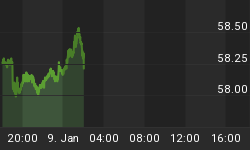And it's happened before, too -- just think back to the 2007-2099 financial crisis
On Wednesday (Jan. 13) CNBC reported that,
"Almost $3.2 trillion has been wiped off the value of stocks around the world since the start of 2016, according to calculations by a top market analyst. U.S. stocks are now off $1.77 trillion, while overseas stocks are down $1.4 trillion."
Stocks rallied on Thursday -- but then tanked even harder on Friday, which probably made that $3.2 trillion figure even bigger.
But how can that be? Doesn't money simply move from one asset class to another?
Our readers have asked us this question before -- especially during the 2007-2009 financial crisis, when 54% of the Dow's value got erased in just 18 months.
You may be wondering this, too. Well, here's an answer -- from Ch. 9 of Bob Prechter's New York Times Business bestseller, Conquer the Crash:
Financial Values Can Disappear
(Excerpt, Conquer the Crash, ch. 9)People seem to take for granted that financial values can be created endlessly seemingly out of nowhere and pile up to the moon. Turn the direction around and mention that financial values can disappear into nowhere, and they insist that it is not possible. "The money has to go somewhere ... It just moves from stocks to bonds to money funds ... It never goes away ... For every buyer, there is a seller, so the money just changes hands."
That is true of the money, just as it was all the way up, but it's not true of the values, which changed all the way up.
Asset prices rise not because of "buying" per se, because indeed for every buyer, there is a seller. They rise because those transacting agree that their prices should be higher. All that everyone else -- including those who own some of that asset and those who do not -- need do is nothing.
Conversely, for prices of assets to fall, it takes only one seller and one buyer who agree that the former value of an asset was too high. If no other bids are competing with that buyer's, then the value of the asset falls, and it falls for everyone who owns it. Financial values can disappear through a decrease in prices for any type of investment asset, including bonds, stocks and land.
Anyone who watches the stock or commodity markets closely has seen this phenomenon on a small scale many times. Whenever a market "gaps" up or down on an opening, it simply registers a new value on the first trade, which can be conducted by as few as two people. It did not take everyone's action to make it happen, just most people's inaction on the other side.
The dynamics of value expansion and contraction explain why a bear market can bankrupt millions of people. At the peak of a credit expansion or a bull market, assets have been valued upward, and all participants are wealthy -- both the people who sold the assets and the people who hold the assets. The latter group is far larger than the former, because the total supply of money has been relatively stable while the total value of financial assets has ballooned. When the market turns down, the dynamic goes into reverse. Only a very few owners of a collapsing financial asset trade it for money at 90 percent of peak value. Some others may get out at 80 percent, 50 percent or 30 percent of peak value. In each case, sellers are simply transforming the remaining future value losses to someone else.
In a bear market, the vast, vast majority does nothing and gets stuck holding assets with low or non-existent valuations. The "million dollars" that a wealthy investor might have thought he had in his bond portfolio or at a stock's peak value can quite rapidly become $50,000 or $5000 or $50. The rest of it just disappears.
You see, he never really had a million dollars; all he had was IOUs or stock certificates. The idea that it had a certain financial value was in his head and the heads of others who agreed. When the point of agreement changed, so did the value. Poof! Gone in a flash of aggregated neurons.
So, the answer comes down to "money" vs. "value." Financial values don't move from one asset to another. They can just disappear.
There is no time to waste
Global stocks lost $3.17 trillion in the first 2 weeks of 2016
Were you ready? Are you ready for what's next?
You can be.
[Urgent New Report] How to Survive and Prosper in this Global Financial Crisis. With global stocks losing $3.17 trillion dollars in the first 8 trading days of 2016 (CNBC), NOW is the time to download this free report from Robert Prechter. This report was adapted from Prechter's New York Times bestseller, Conquer the Crash. You'll get a list of "Imperative Do's and Crucial Don'ts" for surviving and prospering in today's volatile markets. There's no time to waste. It's time you prepare for what's next, NOW. Read the Complete Report.
This article was syndicated by Elliott Wave International and was originally published under the headline Can Stock Values Simply "Disappear"? Yes. EWI is the world's largest market forecasting firm. Its staff of full-time analysts led by Chartered Market Technician Robert Prechter provides 24-hour-a-day market analysis to institutional and private investors around the world.
















